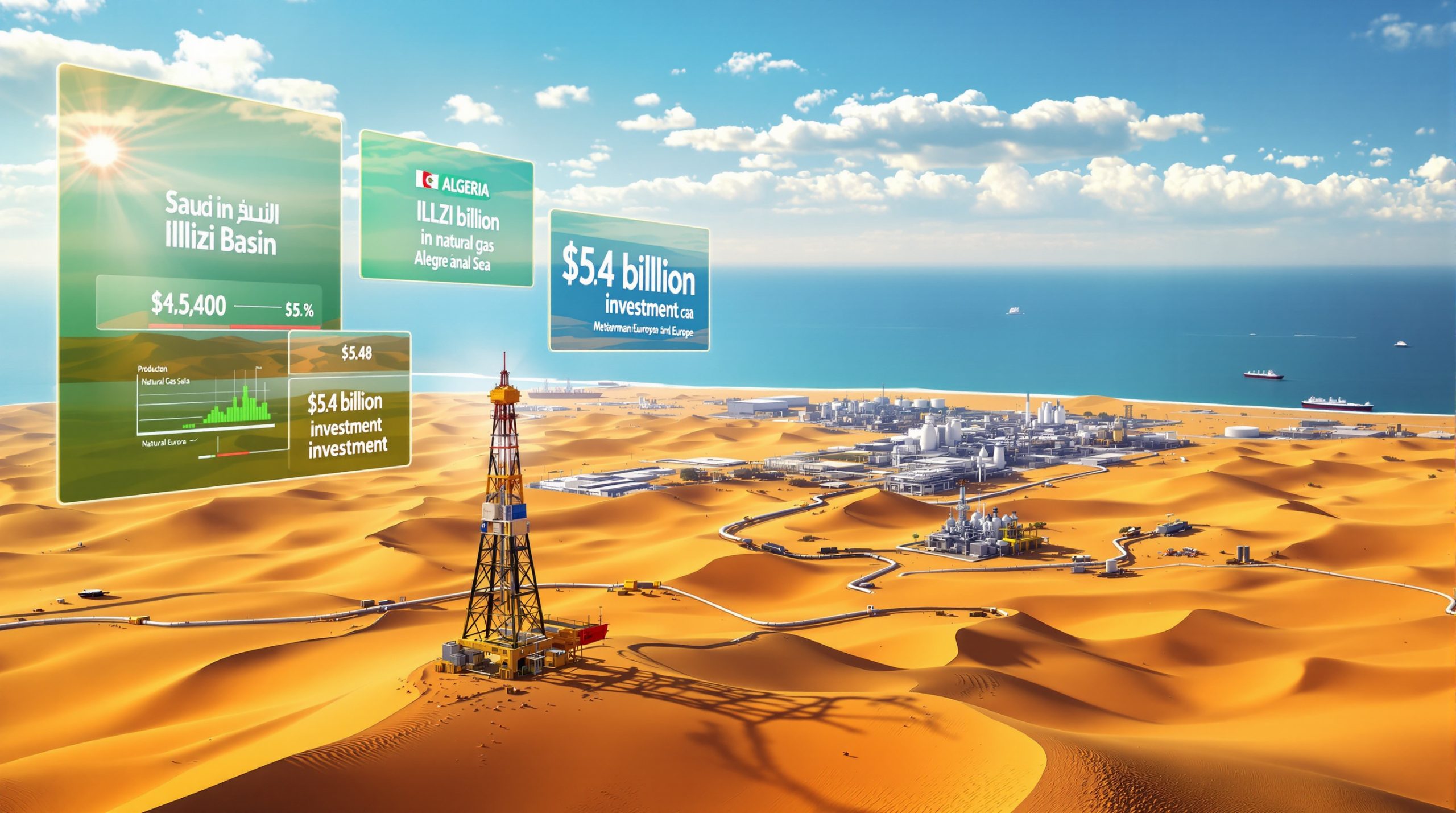What is Driving MP Materials' Remarkable Market Performance?
MP Materials has emerged as a pivotal player in America's US critical minerals strategy, with its stock recently surging 23% following China's announcement of new rare earth export restrictions in December 2024. This dramatic price movement reflects a fundamental shift in the global rare earth supply chain, where Western producers are gaining strategic importance in national security and energy independence initiatives.
The 23% single-session jump signals investors' recognition that companies like MP Materials have transitioned from speculative investments to strategically vital assets in securing Western access to critical materials.
Understanding the Impact of China's New Export Controls
China's latest restrictions require government licenses for any product containing more than 0.1% of Chinese-sourced rare earths. This licensing system gives Beijing discretionary control over downstream applications of materials originally sourced from China, creating significant supply chain uncertainty for manufacturers globally.
With China controlling approximately 69% of global rare earth supply and over 90% of refining capacity, these measures have created an urgent need for alternative sources and processing capabilities outside Chinese influence. The restriction framework essentially functions as a geopolitical lever, allowing China to selectively pressure specific industries or countries.
The Mountain Pass Revival: From Bankruptcy to Strategic Asset
MP Materials operates the Mountain Pass mine in California, the only scaled rare earth mining and processing facility in the Western Hemisphere. After acquiring the bankrupt operation in 2017 for just $20.5 million, the company has transformed it into a cornerstone of U.S. mineral security strategy.
The resurrection of Mountain Pass represents one of the most remarkable turnaround stories in the mining sector, transforming from abandoned asset to national security priority through:
- Restarting mining operations at America's only active rare earth mine
- Developing onsite processing capabilities to reduce dependence on Chinese separation
- Expanding into downstream magnet manufacturing with new facilities
- Creating an integrated supply chain from mine to magnets on American soil
How is JPMorgan's $10 Billion Initiative Transforming MP Materials' Growth Trajectory?
JPMorgan Chase's recently announced $10 billion investment program targeting U.S. national security-linked companies represents a significant vote of confidence in domestic rare earth producers like MP Materials. This massive capital commitment signals a pivotal shift as private finance aligns with government policy objectives in reshaping supply chains for critical minerals energy security.
Strategic Capital Deployment in Critical Mineral Supply Chains
This ambitious investment program reflects growing institutional recognition of rare earths as strategically vital materials. JPMorgan CEO Jamie Dimon explicitly highlighted America's dangerous reliance on "unreliable sources of critical minerals" as motivation for the program, emphasizing the bank's intention to "put its muscle behind" long-standing clients in defense, mining, and AI sectors.
The initiative represents more than typical market investment—it demonstrates how financial institutions are now approaching rare earth investments through both commercial and national security lenses, fundamentally changing valuation models for companies like MP Materials.
Public-Private Partnerships Fueling Expansion
MP Materials has already benefited substantially from this policy shift through:
- A $1 billion loan facility from JPMorgan and Goldman Sachs to fund rare earth magnet manufacturing
- Strategic partnership with the U.S. Department of Defense, which has become a major shareholder
- Access to government procurement guarantees that reduce market risk
- Integration into defense supply chain planning for critical materials
This integration of private capital with government strategic interests creates powerful momentum for MP Materials' growth beyond what purely commercial funding could achieve. The recent JP Morgan mining update further confirms this trend.
What Makes Rare Earth Elements Strategically Critical to Western Economies?
Rare earth elements (REEs) represent a group of 17 metals with unique magnetic, luminescent, and electrical properties that make them irreplaceable in modern technology. Despite their name, most rare earths are relatively abundant in the Earth's crust—the challenge lies in finding economically viable concentrations and separating these chemically similar elements from one another.
Applications Driving Demand Across Strategic Sectors
These critical materials power numerous applications essential to both civilian and military technologies:
| Sector | Applications | Key Rare Earths Used |
|---|---|---|
| Defense | Precision-guided weapons, radar systems, night vision devices | Neodymium, Praseodymium, Samarium |
| Clean Energy | Wind turbine generators, electric vehicle motors, energy storage | Neodymium, Dysprosium, Terbium |
| Electronics | Smartphones, hard drives, speakers, microphones | Neodymium, Europium, Yttrium |
| Advanced Manufacturing | Lasers, glass polishing, catalytic converters | Cerium, Lanthanum, Gadolinium |
The unique properties of rare earths, particularly their magnetic capabilities, make them functionally irreplaceable in many high-performance applications. For example, neodymium-iron-boron magnets offer up to ten times the magnetic strength of conventional ferrite magnets at equivalent sizes, enabling the miniaturization of electronics and efficiency improvements in electric motors.
The Supply Chain Vulnerability Challenge
Western economies face significant challenges in securing rare earth supplies:
- Historical underinvestment in mining and processing outside China
- Technical complexity of separating individual rare earth elements, often requiring 20-40 extraction steps for high-purity separation
- Environmental challenges associated with processing, including management of radioactive by-products
- Long development timelines for new projects (typically 7-10 years)
- Price volatility that has historically deterred investment
These vulnerabilities created the opportunity for MP Materials to position itself as a critical component of supply chain security efforts. The rare earth reserves analysis shows just how concentrated these crucial resources remain globally.
How is MP Materials Building a Vertically Integrated Rare Earth Supply Chain?
MP Materials has embarked on an ambitious three-stage growth strategy to create America's first fully integrated rare earth supply chain. This approach mirrors China's successful model of controlling the entire value chain from mining through processing to magnet manufacturing, but with Western environmental standards and technologies.
Stage 1: Mining and Concentrate Production (Completed)
The company has successfully:
- Restarted mining operations at Mountain Pass
- Achieved production rates exceeding 40,000 tonnes of rare earth concentrate annually
- Optimized mining operations to reach industry-leading cost efficiency
- Secured consistent ore grades averaging 8% rare earth content (significantly higher than global averages)
The company's bastnäsite ore undergoes crushing, grinding, flotation, and magnetic separation to produce a concentrate containing approximately 60% rare earth oxides, establishing a stable foundation for its vertical integration strategy.
Stage 2: Rare Earth Oxide Production (In Progress)
MP Materials has made substantial progress in:
- Developing onsite separation capabilities for producing high-purity rare earth oxides
- Reducing reliance on Chinese processing facilities
- Reaching record production levels of separated rare earth products
- Producing NdPr oxide, the precursor to rare earth magnets
Stage 2 addresses one of the critical bottlenecks in Western supply chains—separation technology—which is among the most technically complex aspects of rare earth production due to the chemical similarities between lanthanide elements.
Stage 3: Magnet Manufacturing (Expanding)
The company is now advancing into:
- Production of NdPr metal at its new facilities
- Manufacturing of finished rare earth permanent magnets
- Development of automotive-grade magnet production
- Creating a complete mine-to-magnet domestic supply chain
This final stage represents the highest value-added portion of the supply chain, with magnet production generating significantly higher margins than raw material or oxide production. By controlling the entire production process, MP Materials can capture value at each stage while ensuring supply chain integrity.
What Financial Metrics Demonstrate MP Materials' Growth Potential?
MP Materials has demonstrated impressive financial performance despite operating in a historically challenging sector. Its vertical integration strategy enables it to progressively capture more value as it moves up the supply chain from low-margin concentrate production to high-margin magnet manufacturing.
Revenue Growth and Production Milestones
The company has achieved:
- Consistent revenue growth driven by increased production volumes
- Record rare earth oxide production levels
- Expanding margins as it moves up the value chain
- Reduced dependence on selling concentrate to Chinese buyers
The transition from selling concentrate to producing oxides and eventually magnets represents a substantial value-multiplier at each stage of processing. While raw concentrate might sell for $3-5 per kilogram, separated oxides command $50-80 per kilogram, and finished magnets can exceed $100 per kilogram, illustrating the financial rationale behind vertical integration.
Strategic Investments Positioning for Long-Term Growth
MP Materials has strategically deployed capital to:
- Expand processing capabilities at Mountain Pass
- Develop the "Independence" magnet manufacturing facility in Texas
- Secure long-term customer relationships with defense and automotive partners
- Invest in research and development for improved extraction and processing technologies
These investments position the company to benefit from both immediate market demands and long-term structural changes in global supply chains.
How Do Geopolitical Tensions Impact MP Materials' Strategic Value?
The rare earth sector has become increasingly politicized as nations compete for secure supply chains of critical materials. This geopolitical dimension fundamentally alters valuation models for companies like MP Materials, where strategic importance may outweigh traditional metrics.
China's Dominance and Strategic Leverage
China has historically used its rare earth dominance as geopolitical leverage:
- Imposed export quotas in 2010, causing price spikes of up to 3,000%
- Threatened rare earth restrictions during trade disputes
- Consolidated domestic producers under state control
- Maintained pricing advantages through environmental regulation disparities
China's approach to rare earths has evolved from quantitative restrictions (export quotas) to qualitative controls (licensing systems), allowing more discretionary management of supply chains while maintaining nominal compliance with WTO obligations.
U.S. Policy Response Creating Opportunities
The Trump executive order has implemented multiple initiatives benefiting domestic producers like MP Materials:
- Critical Minerals Executive Order designating rare earths as strategically vital
- Defense Production Act funding for rare earth projects
- Tax incentives for domestic production and processing
- Direct investment through defense procurement programs
- Restrictions on Chinese-origin rare earths in defense applications
These policies create a favorable operating environment for MP Materials by reducing market risk and providing long-term demand certainty through government procurement channels.
What Challenges Must MP Materials Navigate for Continued Growth?
Despite favorable tailwinds, MP Materials faces several significant challenges in executing its growth strategy. The company must balance the technical complexities of rare earth processing with market uncertainties and competitive pressures.
Technical and Operational Hurdles
The company must overcome:
- Complex metallurgical challenges in rare earth separation
- Technical requirements for producing high-specification magnet materials
- Scaling manufacturing processes to commercial volumes
- Meeting stringent quality standards for defense and automotive applications
Rare earth separation presents significant technical challenges due to the chemical similarity of adjacent lanthanides. Solvent extraction processes typically require multiple stages to achieve the high-purity separation (>99.9%) required for magnet applications, creating substantial capital and operating cost barriers.
Market and Competitive Considerations
MP Materials must navigate:
- Price volatility in rare earth markets
- Potential Chinese market responses to Western supply chain development
- Competition from other emerging Western producers
- Balancing government partnerships with commercial objectives
The company operates in a market where prices have historically been subject to significant volatility, influenced by Chinese production quotas, export restrictions, and speculative trading. This volatility creates challenges for long-term planning and investment decisions.
What Does MP Materials' Future Growth Trajectory Look Like?
MP Materials appears positioned for continued expansion as rare earth demand grows across multiple sectors. The company's integrated approach provides flexibility to adapt to changing market conditions while maintaining strategic relevance.
Expanding Production Capacity and Capabilities
The company's growth plans include:
- Scaling magnet manufacturing from 1,000 metric tons in 2025 to 10,000 metric tons by 2035
- Expanding rare earth oxide separation capabilities
- Developing capabilities for heavy rare earth processing
- Potential international partnerships to secure additional resources
This expansion strategy positions MP Materials to serve growing markets across clean energy, defense, and advanced manufacturing sectors, where demand for high-performance magnets is projected to increase substantially.
Strategic Partnerships Driving Long-Term Value
MP Materials is leveraging partnerships to secure its market position:
- Defense Department supply agreements providing stable demand
- Commercial relationships with major technology companies
- Financial backing from major institutions like JPMorgan
- Research collaborations with national laboratories and universities
These strategic relationships extend beyond typical customer-supplier dynamics to include technology development, market development, and long-term supply security arrangements that support the company's mp materials growth story.
Frequently Asked Questions About MP Materials and Rare Earth Investments
What makes MP Materials different from other rare earth companies?
MP Materials stands apart through its ownership of Mountain Pass, America's only active rare earth mine, combined with its vertical integration strategy extending from mining to magnet manufacturing. Unlike most Western competitors still in development stages, MP Materials has established production, government partnerships, and a clear path to creating a complete domestic supply chain.
The company's resource quality also provides competitive advantages—Mountain Pass boasts ore grades averaging 8%, substantially higher than most global deposits, which typically range from 0.5-2% rare earth content.
How dependent is MP Materials on Chinese markets?
MP Materials has strategically reduced its dependence on Chinese buyers by developing domestic processing capabilities and securing U.S. customers. While initially selling concentrate to Chinese processors, the company has progressively moved up the value chain to produce separated oxides and metals domestically, significantly reducing its exposure to Chinese market dynamics.
This transition represents a fundamental shift from the company's early operations, when China was effectively its only market for unprocessed concentrate. Each stage of vertical integration reduces this dependency and increases domestic value creation.
What impact could technological changes have on MP Materials?
Technological developments present both opportunities and risks. Advances in recycling, substitution, or alternative magnet technologies could potentially reduce demand for virgin rare earth materials. However, MP Materials is positioning itself at the forefront of innovation through partnerships with research institutions and customers to develop next-generation materials and applications.
The company's integrated approach provides flexibility to adapt to evolving technological landscapes while maintaining relevance across multiple application sectors.
How Does MP Materials Compare to Other Rare Earth Producers?
The rare earth sector includes several notable companies with different strategic approaches and development stages. Each has adopted varying approaches to addressing the challenges of building Western rare earth supply chains.
Comparative Analysis of Major Western Rare Earth Companies
| Company | Primary Assets | Development Stage | Vertical Integration | Strategic Focus |
|---|---|---|---|---|
| MP Materials | Mountain Pass (USA) | Production | Mining to Magnets | Full domestic supply chain |
| Lynas Rare Earths | Mt. Weld (Australia) | Production | Mining to Oxides | Light rare earths, Japanese partnerships |
| Iluka Resources | Eneabba (Australia) | Development | Mining to Oxides | Heavy rare earths, government backing |
| Ucore Rare Metals | Alaska SMC (USA) | Development | Processing | Separation technology |
| Arafura Resources | Nolans (Australia) | Development | Mining to Oxides | NdPr focus, European partnerships |
This diverse landscape creates a competitive environment where companies are differentiated by resource quality, processing capabilities, geographic focus, and partnership strategies.
Competitive Advantages in the Rare Earth Value Chain
MP Materials has established several competitive advantages:
- Only operating rare earth mine in North America
- Highest-grade rare earth deposit in the Western world
- Advanced progress in vertical integration
- Strong government and financial institution support
- Strategic location for serving U.S. defense and technology sectors
These advantages position the company favorably against both established and emerging competitors in the rare earth space, though each competitor brings unique strengths to different segments of the market.
What Investment Considerations Should Inform Decisions About MP Materials?
Investors evaluating MP Materials should consider several key factors that will influence its long-term performance. The company operates at the intersection of commodity markets, technology development, and geopolitical strategy, creating a complex investment case.
Growth Catalysts and Value Drivers
Potential positive catalysts include:
- Continued geopolitical tensions driving supply chain reshoring
- Expansion of electric vehicle and renewable energy markets
- Defense spending increases focused on supply chain security
- Successful execution of vertical integration strategy
- Additional government incentives for domestic production
The convergence of these factors could create substantial tailwinds for MP Materials' growth story, supporting both revenue expansion and margin improvement as the company extends its value chain presence.
Risk Factors and Challenges
Potential risks include:
- Rare earth price volatility affecting margins
- Technical challenges in scaling processing operations
- Competition from other emerging Western producers
- Potential changes in government policy priorities
- Chinese strategic responses to Western supply development
Investors must weigh these risks against the company's strategic positioning and long-term value proposition in an increasingly critical sector of the global economy.
Further Exploration of MP Materials' Growth Story
MP Materials represents more than just another mining company—it embodies a strategic response to evolving global supply chain dynamics where critical minerals have become central to economic and national security objectives. The company's development from a bankrupt asset to a cornerstone of Western rare earth supply chains demonstrates how rapidly the strategic landscape has evolved.
As geopolitical tensions continue to shape trade policies and technology access, companies controlling critical material supply chains will increasingly find themselves operating at the intersection of commerce and national interest. MP Materials' ability to navigate this complex environment while executing its technical and commercial objectives will determine its ultimate success in capitalizing on the remarkable growth opportunity before it.
Ready to Capitalise on the Next Major Mineral Discovery?
Discover why historic mineral finds like those from MP Materials can generate substantial returns by exploring Discovery Alert's dedicated discoveries page, where proprietary Discovery IQ technology delivers real-time alerts on significant ASX mineral discoveries, turning complex data into actionable insights.




